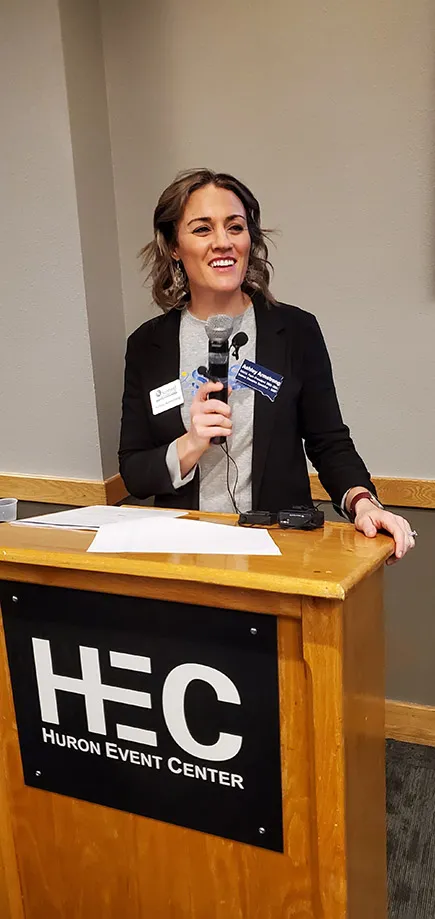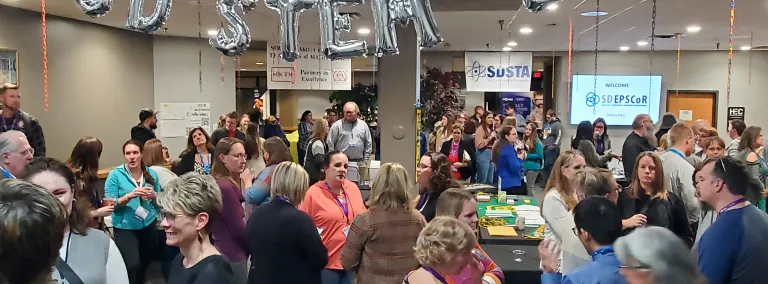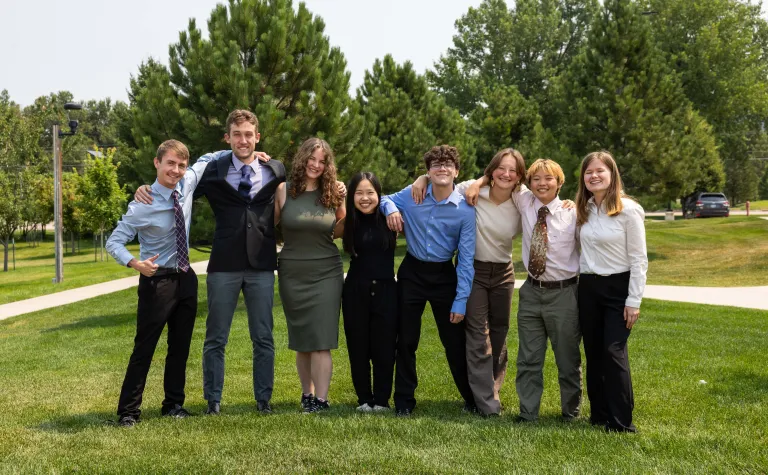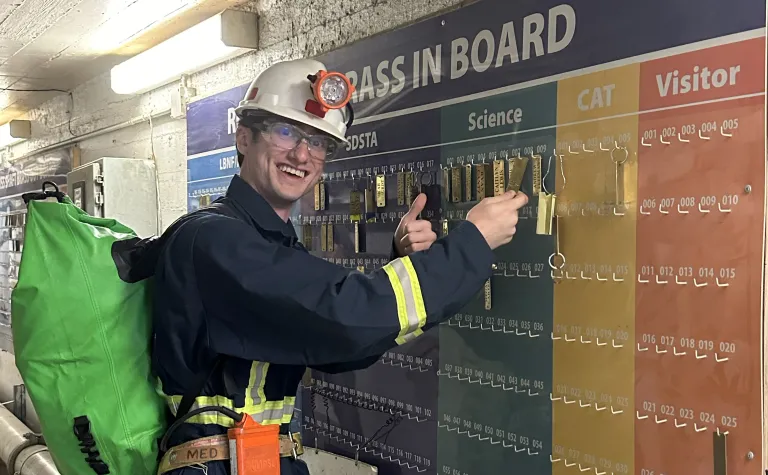SURF plays key role at 2024 South Dakota STEM Ed Conference
Members of the SURF E&O team took leading roles at the 32nd annual joint conference of the SDSTA and the SDCTM in Huron.
Lead, SD (Feb. 5, 2024) — Members of the Sanford Underground Research Facility (SURF) Education and Outreach (E&O) team took leading roles at the 32nd annual joint conference of the South Dakota Science Teaching Association (SDSTA) and the South Dakota Council of Teachers of Mathematics (SDCTM) in Huron.
(Note: SDSTA is also the acronym for the owner and operator for SURF. The South Dakota Science and Technology Authority is a separate entity from the state science teaching association sponsoring this conference.)
“The SURF E&O team spreads out across this conference, we’re at the award ceremonies, we’re in the exhibit hall, we have an exhibit table, we catch people in between sessions, and we lead sessions throughout the day. We're dotted everywhere,” said Julie Dahl, a science education specialist at SURF. We really cast a wide net in a short number of days, and the people we're able to connect with are amazing.”
Inspiring kids and teachers in underserved districts
SURF’s attendance at the South Dakota STEM Ed Conference is just one part of the ongoing annual outreach to thousands of students and hundreds of teachers in schools across South Dakota. The overall effort aims to stimulate curiosity and create opportunity for all students and to build the STEM workforce of tomorrow. A big part of this effort is to make sure that students in small rural districts have the same access to robust STEM education as students in larger districts.
“Many districts across our state have one person teaching in their math department for middle school and high school, and maybe one person in the science department,” said Ashley Armstrong, Ph.D., science education specialist at SURF, a conference organizer, and the president of the SDSTA. “The conference works hard to bring in new teachers, and those are the exact individuals that SURF E&O wants to find and reach because they may not be aware of all the support and resources that are available to them.”
Armstrong says South Dakota teachers deserve praise for the incredible work they do every day. “Our conference showcases the hard work that teachers are doing in the classroom, where the rubber meets the road, our students are experiencing amazing things. This is evident when we go out to national conferences, we see that South Dakota teachers are exceptional. We really want to highlight that our education system and our teachers are second to none. South Dakota, is a leader in the STEM education sector,” Armstrong said.
Armstrong notes that supporting teachers in rural districts with tools and resources is a big part in leveling the playing field between small and large schools. Nicol Reiner, director of E&O at SURF agrees. “This conference and our own outreach to these small districts is incredibly important, especially for those teachers who are the sole STEM educator in their school system. They often don't have someone locally who can provide the kind of peer-to-peer mentorship and support that they can get at this conference,” said Reiner.
In the end, supporting teachers is all about supporting students. SURF’s outreach efforts help ensure that all young people in the state have opportunities to get excited about science and explore careers in STEM.
“A lot of our efforts are towards exposing kids to the possibilities of where they can go after they've taken their classes in high school. So, we intentionally reach out to those districts that are underserved for resources,” said Chad Ronish, a science education specialist at SURF. “Often visiting these small districts requires the longest travel, and they may have some of the smallest class sizes, but we do this because those kids need the same access to a robust STEM education.”
Nobel laureates come from rural schools, but they can’t achieve greatness alone
Earnest Lawrence, the winner of the 1939 Nobel Prize in physics for the invention of the cyclotron, spent his childhood years attending public school in the small town of Canton, SD. His work laid the foundation for the development of medical imaging devices like the MRI machine, widely used in hospitals around the world today. Lawrence is proof that students from rural schools can and do become world leaders in fields of science.
This notion is part of what drives the SURF E&O team in their outreach efforts to small and remote communities across the state. “It is difficult to inspire kids to do things that they can't see,” Reiner said. “We live in a state where many kids and even teachers come from agricultural communities. And that's awesome, we want to inspire kids to do that too. We also want them to understand other fields that they may not have been exposed to, because if you can't see it, you can't get there.”
Reiner points out that not every student wants to be a scientist. “But we can talk about all the ways that they can support the science, doing the things they love, students that are into writing, and computer animations, engineering, or operations work, we need all sorts of backgrounds to run a facility like SURF, and this really broadens that picture.”
Reiner points out that any future Nobel winning science at SURF, or any one of the national labs around the country, could not happen without a large network of support staff. Scientific achievement and breakthroughs are team efforts that often rely on hundreds of people working together in coordinated systems of support. SURF’s involvement in the joint conference of the SDSTA and SDCTM is just one part of that larger effort—the outreach helps build the educational foundation for future innovation.
Caption: Members of the SURF E&O team utilized virtual reality goggles in their outreach and interactions with teachers and students during the 2024 STEM Ed Conference. The goggles immerse viewers inside the large caverns underground at SURF.




